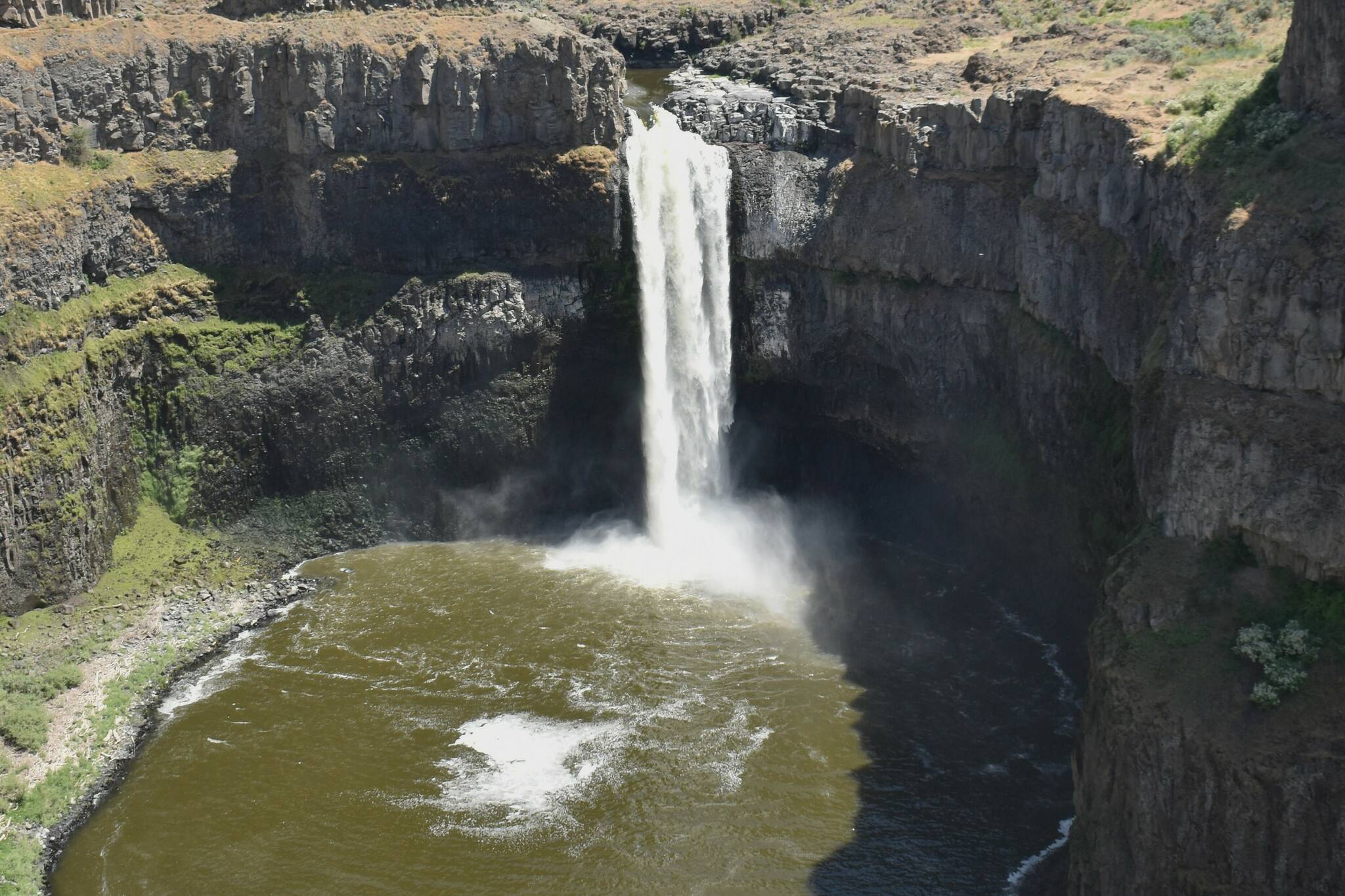Making the trip to Palouse Falls is, admittedly, something of an off-the-beaten-path adventure.
Western Washington residents, accustomed to cities that flow directly into one another, might be taken aback by the remoteness of site. After all, Palouse Falls is situated east of the Cascades between the Adams County community of Washtucna (population 211 according to the 2020 census) to the north and the Columbia County burg of Starbuck to the south (129 residents). It’s about an hour’s drive south of Ritzville’s I-90 exit.
Despite the drive, Palouse Falls remains a must-see destination.
So, if you’re not entirely convinced that you should travel perhaps four hours from the heart of the Puget Sound metropolis to the land of sagebrush and basalt outcroppings, here are a few selling points:
■ Palouse Falls is Washington state’s official waterfall, having earned that designation in 2014. Some local schoolchildren were the primary advocates, adding a nice touch.
■ You’re a fan of the natural events that shaped much of the region? Consider this: Palouse Falls was carved more than 13,000 years ago, the experts say, the result of Ice Age flooding. It is one of the last active waterfalls that owes its existence to those massive, rushing walls of water.
■ You’re a road tripper? Palouse Falls is a refreshing break from the madness of Puget Sound, the crush of people and the frequent gridlock. The territory allows for miles and miles of natural splendor in every direction. Visiting during less-popular times means other vehicles can be few and far between.
So, if you’re ready to hop in the family truckster, pick up Aunt Edna and set off an adventure, here are some travel tidbits to keep in mind.
THINGS HAVE CHANGED
There are three vantage points in the 94-acre state park and that’s where visitors are supposed to be – just those three. Not long ago, the Parks and Recreation Commission deemed that certain spots are off limits. On the list were the bottom of the falls, an area at the top of the falls and some narrow pathways lining steep cliffs.
The reasoning was pretty straightforward. Between 2016 and 2018, four men died at Palouse Falls after following unofficial trails. Signage at the park pulls no punches: “People have died here,” one sign warns. “We want you to live. Stay back from cliff edge.”
Another recent change is that tent camping is now off-limits. The park is “day use” only.
IT’S A SPECIAL PLACE (AND POPULAR)
The remote state park was, not too long ago, renamed the Palouse Falls State Park Heritage Site. That designation recognizes “the significant cultural history of the Palouse River canyon,” according to a State Parks report.
The region was, for millennia, home to Native American tribes, a crucial point not lost on those who make final decisions on park use. Also from the Parks report: “The vision of the park is one where visitors can experience quiet contemplation and appreciation of the landscape and its cultural and geologic history.”
For a variety of reasons, Palouse Falls’ popularity has boomed. It has been estimated that the park greeted fewer than 50,000 visitors a decade ago; now, that number has climbed to the 200,000 range.
YES, THERE ARE SNAKES
OK, this isn’t necessarily everyone’s idea of a selling point (but the author has a fondness for things that slither and enjoys some editorial latitude).
During an early-June visit to the falls, a park employee noted that he had cleared the parking lot of a rattlesnake and a bull snake just a day earlier. They like the shelter of the Dumpsters, he said. So, of course, the only rational thing to do was take a peek under the trash receptacles.
Alas, no snakes.
On the subject of wildlife, however, Palouse Falls is also home to yellow-bellied marmots. They’re darned cute and can be seen scurrying about, usually ducking into dens to avoid humans (smart creatures, those marmots).
KNOW BEFORE YOU GO
Entry into all state parks requires a Discover Pass and Palouse Falls is no different. A day pass will set you back $10 and a yearly pass is $30. Revenues from sales of the pass have replaced appropriations from the state’s general fund and are used to cover parks’ operating expenses.
Both the day pass and the annual pass can be purchased at Palouse Falls, either at a staffed booth or an automated kiosk.
Anyone traveling to the falls should also be aware that a remote location doesn’t mean there are never crowds. The park has its busy season (weekends and holidays, especially during the spring thaw when the Palouse River fills and the falls are especially dramatic).
Also, the parking lot isn’t expansive and does not include turnarounds, meaning travel trailers and RVs can be refused entry at certain times.
Finally, the park is remote. That means cell phones are of no use and there’s no land line at the park. Food, gas and emergency services are not immediately available.


